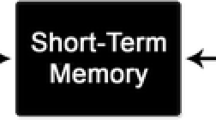Abstract
How can animation be used to promote learner understanding of scientific and mathematical explanations? In this review, we examine the role of animation in multimedia learning (including multimedia instructional messages and microworld games), present a cognitive theory of multimedia learning, and summarize our program of research, which has yielded seven principles for the use of animation in multimedia instruction. These include the multimedia principle (present animation and narration rather than narration alone), spatial contiguity principle (present on-screen text near rather than far from corresponding animation), temporal contiguity principle (present corresponding animation and narration simultaneously rather than successively), coherence principle (exclude extraneous words, sounds, and video), modality principle (present animation and narration rather than animation and on-screen text), redundancy principle (present animation and narration rather than animation, narration, and on-screen text), and personalization principle (present words in conversational rather than formal style). Animation can promote learner understanding when used in ways that are consistent with the cognitive theory of multimedia learning.
Similar content being viewed by others
REFERENCES
Baddeley, A. (1998). Human Memory, Allyn and Bacon, Boston.
Clark, R. E. (1994). Media will never influence learning. Educ. Technol. Res. Dev. 42: 21–30.
Dunbar, K. (1993). Concept discovery in a scientific domain. Cogn. Sci. 17: 397–434.
Kozma, R. B. (1994). Will media influence learning? Reframing the debate. Educ. Technol. Res. Dev. 42: 7–19.
Mayer, R.E. (1996). Learners as information processors: Legacies and limitations of educational psychology's second metaphor. Educ. Psychol. 31: 151–161.
Mayer, R. E. (1997). Multimedia learning: Are we asking the right questions? Educ. Psychol. 32: 1–19.
Mayer, R. E. (1999). Multimedia aids to problem-solving transfer. Int. J. Educ. Res. 31: 661–624.
Mayer, R. E. (in press). Multimedia Learning, Cambridge University Press, New York.
Mayer, R. E., and Anderson, R. B. (1991). Animations need narrations: An experimental test of a dual-coding hypothesis. J. Educ. Psychol. 83: 484–490.
Mayer, R. E., and Anderson, R. B. (1992). The instructive animation: Helping students build connections between words and pictures in multimedia learning. J. Educ. Psychol. 84: 444–452.
Mayer, R. E., Heiser, J., and Lonn, S. (2001). Cognitive constraints on multimedia learning: When presenting more material results in less understanding. J. Educ. Psychol. 93: 187–198.
Mayer, R. E., and Moreno, R. (1998). A split-attention affect in multimedia learning: Evidence for dual processing systems in working memory. J. Educ. Psychol. 90: 312–320.
Mayer, R. E., Moreno, R., Boire, M., and Vagge, S. (1999). Maximizing constructivist learning from multimedia communications by minimizing cognitive load. J. Educ. Psychol. 91: 638–643.
Mayer, R. E., and Sims, V.K. (1994). For whom is a picture worth a thousand words? Extensions of a dual-coding theory of multimedia learning. J. Educ. Psychol. 86: 389–401.
Moreno, R., and Mayer, R. E. (1999a). Cognitive principles of multimedia learning: The role of modality and contiguity. J. Educ. Psychol. 91: 358–368.
Moreno, R., and Mayer, R. E. (1999b). Multimedia-supported metaphors for meaning making in mathematics. Cogn. Instr. 17: 215–248.
Moreno, R., and Mayer, R. E. (2000a). A coherence effect in multimedia learning: The case for minimizing irrelevant sounds in the design of multimedia instructional messages. J. Educ. Psychol. 92: 117–125.
Moreno, R., and Mayer, R. E. (2000b). Engaging students in active learning: The case for personalized multimedia messages. J. Educ. Psychol. 93: 724–733.
Moreno, R., Mayer, R. E., and Lester, J. C. (2000). Life-like pedagogical agents in constructivist multimedia environments: Cognitive consequences of their interaction. In Proceedings of ED-MEDIA 2000, AACE Press, Charlottesville, VA, pp. 741–746.
Pailliotet, A. W., and Mosenthal, P. B. (eds.). (2000). Reconceptualizing Literacy in the Age of Media, Multimedia, and Hypermedia, JAI/Ablex, Norwood, NJ.
Paivio, A. (1986). Mental Representations: A Dual Coding Approach, Oxford University Press, Oxford, England.
Rieber, L. P. (1990). Animation in computer-based instruction. Educ. Technol. Res. Dev. 38: 77–86.
Rieber, L. P. (1996). Animation as feedback in computer-based simulation: Representation matters. Educ. Technol. Res. Dev. 44: 5–22.
Ross, S.M. (1994). Delivery trucks or groceries? More food for thought on whether media (will, may, can't) influence learning: Introduction to special issue. Educ. Technol. Res. Dev. 42: 5–6.
Salomon, G. (1979/1994). Interaction of Media, Cognition, and Learning, Erlbaum, Hillsdale, NJ.
Sweller, J. (1999). Instructional Design in Technical Areas, ACER, Camberwell, Australia.
van Merrienboer, J. J. G. (1997). Training Complex Cognitive Skills, Educational Technology Publications, Englewood Cliffs, NJ.
White, B. Y. (1993). ThinkerTools: Causal models, conceptual change, and science education. Cogn. Instr. 10: 1–100.
Wittrock, M. C. (1974). Learning as a generative activity. Educ. Psychol. 11: 87–95.
Author information
Authors and Affiliations
Rights and permissions
About this article
Cite this article
Mayer, R.E., Moreno, R. Animation as an Aid to Multimedia Learning. Educational Psychology Review 14, 87–99 (2002). https://doi.org/10.1023/A:1013184611077
Issue Date:
DOI: https://doi.org/10.1023/A:1013184611077




